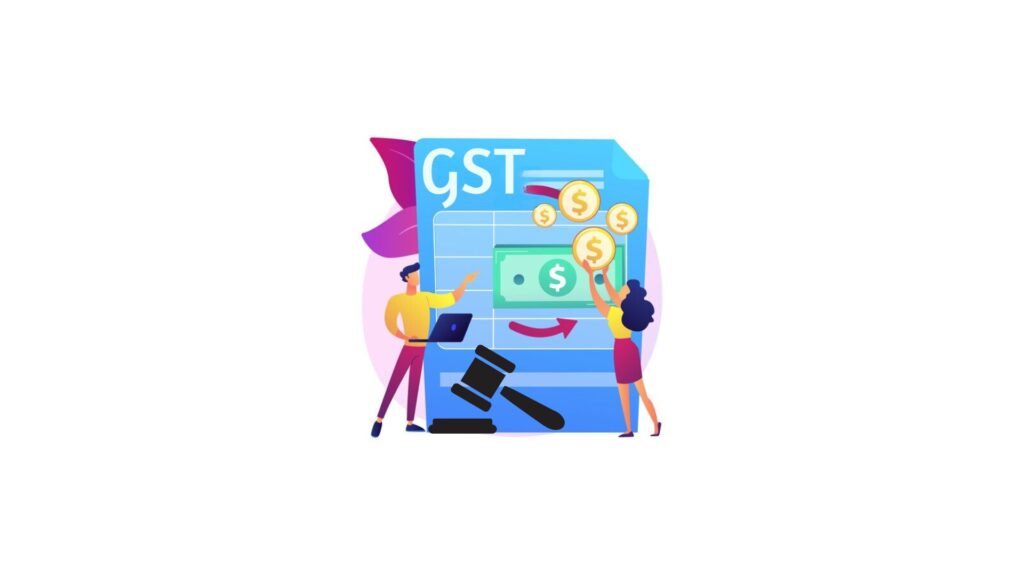
29 Apr Explanations and their Retrospective Effect

In legal contexts, explanations play a pivotal role in interpreting statutes and resolving disputes. Understanding their retrospective effect is crucial for legal practitioners and stakeholders alike.
- Clarificatory Explanation in Legal Context
Introduction
In legal proceedings, the case of Collector of Central Excise, Shillong vs Wood Craft Products Ltd. (1995) 3 SCC 454 stands as a notable example highlighting the retrospective application of clarificatory notifications. This article aims to dissect the intricacies of this case, delving into its facts, issues, and held decisions.
Facts of the Case
The case revolves around Wood Craft Products Ltd., a manufacturer of block boards. The company submitted a classification list, classifying block boards under Tariff Entry 4410.90, attracting a “nil” rate of duty. However, the Assistant Commissioner disagreed with this classification and classified it under Tariff Entry 4408.90, subjecting it to excise duty, which the company duly paid. Despite the company’s appeals against this classification being dismissed initially, the Customs, Excise and Gold (Control) Appellate Tribunal eventually ruled in favor of the company, leading to a refund of the duty paid.
Issue
The primary issue in contention arose when the Revenue, subsequent to a reversal of the Tribunal’s order by the Supreme Court, sought repayment of the refunded amounts from Wood Craft Products Ltd. The question at hand was whether the refunds, already granted to the company, could be recovered beyond the statutory limitation period of six months as envisaged under Section 11-A of the Act.
Held
Upon careful consideration, the Supreme Court held that the approach of the Tribunal was misconceived. Despite the statutory limitation period, the reversal of the Tribunal’s order mandated restitution by Wood Craft Products Ltd. The Court emphasized that the company was legally bound to restitute the refunded amounts to the Revenue, considering the Supreme Court’s reversal of the Tribunal’s order.
The Civil Appeals were allowed, and the Court ordered Wood Craft Products Ltd. to repay the refunded amounts within twelve weeks, along with interest at the rate of twelve per cent per annum from September 1, 1995, until payment or realization. Additionally, the company was directed to bear the costs of the appeals.
- Expansion of Scope: Clarifying vs Enlarging
Introduction
Judicial decisions serve as guiding lights, providing clarity and direction in legal matters. The judgment in question pertains to an appeal filed against an Order in Original, revealing complexities surrounding excise duty exemptions and clarifications.
Facts of the Case
The appellant, a manufacturer of power-driven pumps and their parts, contended that various notifications exempted these items from excise duty since 1978. In 1994, the Government rescinded multiple notifications and issued a consolidated one. However, an inadvertent omission in the new notification led to confusion regarding the exemption status of certain parts of power-driven pumps.
Issue
The primary issue revolved around the retrospective application of a subsequent clarificatory notification. The appellant argued that the subsequent notification merely rectified an earlier omission and should be deemed retrospective. Conversely, the respondent contended that the subsequent notification did not have retrospective effect and should apply prospectively.
Held
After meticulous examination, the Court upheld the appellant’s stance, emphasizing the consistent policy of exempting certain items from excise duty. Citing previous precedents, the Court ruled that clarificatory notifications serve to elucidate rather than expand the scope of exemptions. Therefore, the subsequent notification rectifying the omission was deemed retrospective, ensuring continuity in the exemption policy.
- Determining the Function of Explanation
Introduction
In the realm of legal discourse, particularly in matters of taxation, the interpretation of statutes and their provisions holds paramount importance. One such case that delves into the intricacies of statutory interpretation is that of the State versus Corporation Bank, which revolves around the applicability of sales tax on auction sales of pledged goods by banks. Let’s dissect the case to understand the nuances of the legal arguments and the final judgment.
Facts of the Case
The case stemmed from a demand notice issued by the Commercial Tax Officer, Warangal, to Corporation Bank, demanding payment of sales tax on the turnover of an auction sale of jewellery held on August 19, 1987. The demand was made under Section 5 of the Andhra Pradesh General Sales Tax Act, 1957, with reliance on Section 2(1)(e) read with Explanation IV of the Act. Corporation Bank, aggrieved by the notice, filed a writ petition challenging its legality, contending that the provisions of the Act did not apply to banking transactions.
Issue
The primary issue at hand was whether Explanation IV of the Andhra Pradesh General Sales Tax Act, 1957 would operate retrospectively, especially concerning an auction sale held prior to the enactment of the amending Act No. 27 of 1996, which expanded the definition of “dealer” to include banks.
Held
The Division Bench, in its judgment dated June 8, 2001, allowed the writ petition, quashing the demand notices. The court held that banks were not amenable to sales tax on the sale of pledged goods, as the auction sale in question occurred before the enactment of the amending Act. The court analyzed the nature of Explanation IV and concluded that it was not merely clarificatory but aimed at expanding the definition of “dealer.” As such, it could not be applied retrospectively to cover transactions predating its enactment. The court also noted that the amending Act specifically stated its effective date as August 1, 1996, further affirming its prospective application. Therefore, Explanation IV would only apply to transactions occurring on or after August 1, 1996.
- Retrospective Effect Without Explicit Explanation
Introduction
In the realm of legal battles, the case of Entertainment Tax Officer-I, Khammam, and the State of Andhra Pradesh stands as a significant landmark. This article delves into the intricacies of this case, exploring its historical backdrop, the contentious issues at hand, and the ultimate judicial pronouncements.
Facts of the Case
To comprehend the essence of this legal dispute, it’s imperative to traverse through the annals of the Andhra Pradesh Entertainments Tax Acts. The saga begins with the inception of the Andhra Pradesh Entertainments Tax Act, 1939, which laid down the framework for levying taxes on entertainment shows. Over the years, amendments were introduced, altering the tax structure and payment mechanisms. Notably, Act No. 16 of 1985 stirred controversy by its retrospective applicability between September 7, 1984, and October 24, 1984.
Issue
Central to the case was the retrospective effect of Act No. 16 of 1985. The High Court of Andhra Pradesh, in its judgment, struck down Section 1 of the said Act, questioning the validity of retrospective taxation without adequate explanation.
Held
The appellate court, upon scrutiny, upheld the provisions of Sub-section (2) of Section 1 of Act No. 16 of 1985. It refuted the High Court’s stance, emphasizing the legislative authority’s competence to enact laws retrospectively, particularly in matters of taxation.
- Declaratory vs Burdensome Explanations
Introduction
In legal proceedings, the interpretation of statutes and the retrospective application of laws often lead to contentious debates. The case under review involves appeals challenging the retrospective operation of an Explanation to a provision of the Karnataka Sales Tax Act, 1957. Delivered by Justice Syed Shah Mohammed Quadri, the judgment sheds light on the nuanced legal principles at play.
Facts of the Case
The appeals stemmed from a common judgment of the Division Bench of the High Court of Karnataka, Bangalore, concerning writ appeals and petitions dated September 2, 1999. The crux of the matter lay in the retrospective application of the Explanation to the first proviso of Section 5(1-4) of the Karnataka Sales Tax Act, 1957.
Issue
The primary contention revolved around the validity of the retrospective operation of the Explanation. Appellants argued that they suffered significant economic loss due to their inability to pass the tax burden on consumers in previous years. Conversely, the State asserted the legality of the retrospective application, citing the need to clarify existing liabilities.
Held
Upon thorough deliberation, the court dismissed the appeals, upholding the validity of the Explanation’s retrospective operation. It emphasized the legislative prerogative to impose taxes retrospectively, provided such actions are not arbitrary or unreasonable. The court elucidated that the retrospective effect only applied for a brief period, thus mitigating the alleged hardship faced by the appellants.
- Judicial Perspective on Retrospective Effect
Introduction
The legal landscape often grapples with complexities surrounding retrospective legislations. In the following discourse, we delve into a series of appeals challenging the validity and retrospective effect of Act 25 of 1988 enacted by the Andhra Pradesh State Legislature.
Facts of the Case
The appeals centered around Act 25 of 1988, which took effect on 6-9-1988 with retrospective implications from 8-7-1983. Multiple contentions were raised before the High Court, primarily revolving around the duration and nature of the retrospective levy.
Issue
Key issues raised encompassed the alleged oppressive nature of the retrospective enactment, discriminatory aspects concerning local and imported goods, and the interpretation of tax rates applicable to specific transactions.
Held
The court upheld the validity of Act 25 of 1988, emphasizing the legislative competence to enact retrospective taxation. It dismissed claims of oppression, noting the remedial nature of the legislation and the reasonable period for which the tax was levied.
Conclusion: Legislative Intent and Retrospective Effect
In conclusion, understanding the retrospective effect of explanations is essential for legal interpretation. Legislative clarity and judicial scrutiny ensure a harmonious balance between retrospective and prospective effects, ultimately serving the interests of justice.


No Comments